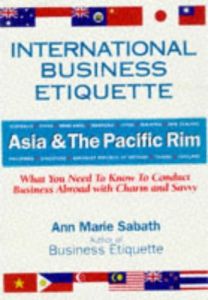Join getAbstract to access the summary!

Join getAbstract to access the summary!
Ann Marie Sabath
International Business Etiquette: Asia & The Pacific Rim
Career Press, 1998
What's inside?
Critical business skills in Asia: Building relationships and preserving “face.”
Recommendation
Ann Marie Sabath ever so politely documents the social and business etiquette practiced in 13 Asian and Pacific Rim countries. Chock full of practical "do’s and don’ts," the book includes plenty of basic information about each country, including history, air travel, telephone, currency, holidays, language, religion, time zones and weather. To fit so much into only 200 pages, the author presents only the most important highlights and writes in a concise, authoritative, yet upbeat style. getAbstract recommends this book to those doing business in Australia, China, Hong Kong, Indonesia, New Zealand, Japan, Malaysia, the Philippines, Singapore, South Korea, Taiwan, Thailand and Vietnam, and to those doing business elsewhere with men and women from these countries. And, just remember what Mom said, "Mind your manners wherever you go so they’ll know you weren’t raised in a barn."
Summary
About the Author
Ann Marie Sabath is the author of Etiquette and Business Etiquette in Brief. She is the founder and president of At Ease, Inc., which specializes in domestic and international business etiquette. She has trained employees of many major companies, including Fidelity Investments, the Huffy Corporation, Saks Fifth Avenue, Deloitte and Touche, MCI Telecommunications and the Marriott Corporation.




















Comment on this summary